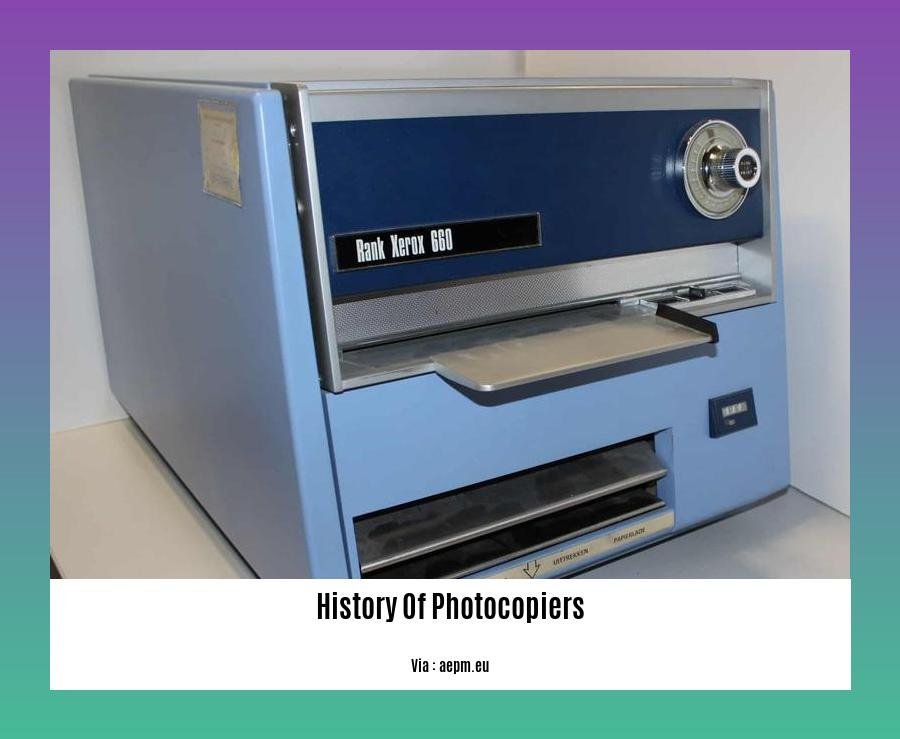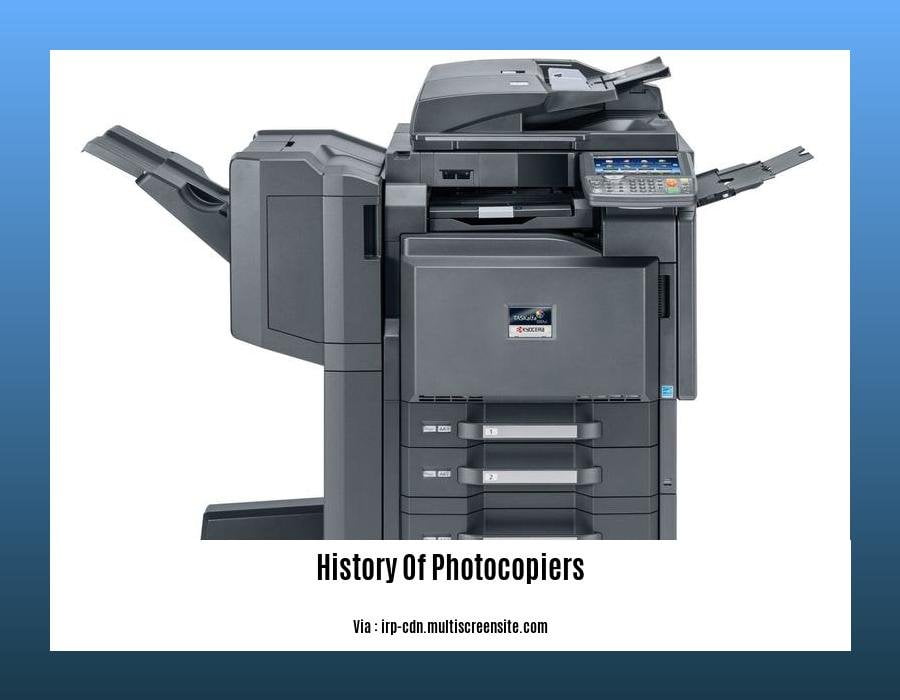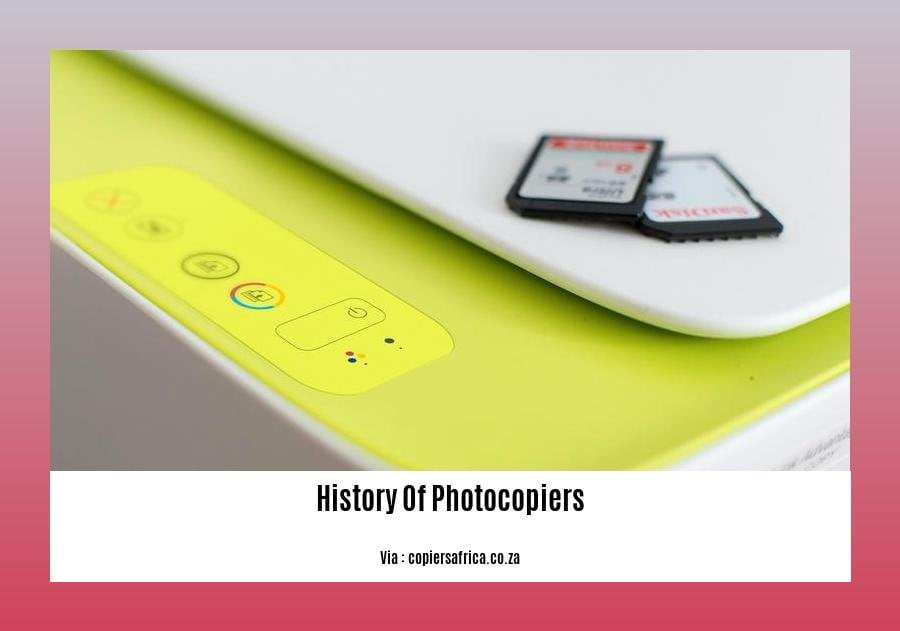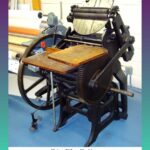Embark on a captivating journey through innovation as we delve into the rich history of photocopiers. From their humble origins to their profound impact on modern society, these remarkable devices have revolutionized the way we share and disseminate information. Join us as we uncover the untold stories and intricate details that have shaped the evolution of photocopiers, transforming them from mere machines into indispensable tools that have left an indelible mark on our world. [A Journey Through Innovation: Exploring the History of Photocopiers] promises to be an enlightening exploration into the past, present, and future of these technological marvels.
Key Takeaways:
Photocopiers, also known as copy machines, enable fast and affordable duplication of documents and images onto paper or plastic film.
Chester Carlson, a patent attorney and part-time researcher, invented photocopying.
Liquid-toner copiers were popular in the 1960s and 1980s due to Savin Corporation’s patented technology.
Xerography, a dry process utilizing electrostatic charges on a light-sensitive photoreceptor, is the most common technology in modern photocopiers.
Photocopying copyrighted material like books or scientific papers is restricted in most countries.
Early photocopiers emitted harmful ultraviolet light, leading to the use of green filters to mitigate the effects.
Anti-counterfeiting measures are incorporated in some countries due to the risks associated with color copiers.
Forensic techniques can trace copiers and printers through imperfections in their output.
Photocopiers have replaced traditional copying methods like Verifax, Photostat, carbon paper, mimeograph machines, and duplicating machines.
Photocopying is widely used in various sectors including business, education, and government.
**History of Photocopiers**

Before we dive into the realm of technological marvels, let’s take a step back and explore the fascinating history of photocopiers. This journey begins with Chester Carlson, a man who forever changed the way we replicate information.
The Birth of Xerography
Carlson, an American patent attorney, invented a revolutionary process called xerography in 1938. This groundbreaking method used static electricity to transfer an image onto paper, paving the way for the birth of the photocopier.
The Evolution of Xerography
Over the next few decades, Carlson’s invention underwent remarkable transformations, leading to the development of the first commercial photocopier in 1959 by Haloid Xerox. This machine, the Xerox 914, was a game-changer, bringing the convenience of photocopying to offices worldwide.
The Digital Revolution
The 1980s marked the dawn of the digital age, and photocopiers embraced this transformation wholeheartedly. Digital copiers, with their ability to store and manipulate digital images, offered unprecedented flexibility and ushered in a new era of document reproduction.
Color Photocopiers
In the 1990s, color photocopiers emerged, adding a vibrant dimension to the world of photocopying. These machines opened up new avenues for creative expression and revolutionized fields such as graphic design and marketing.
The Multifunctional Era
Modern photocopiers are not just copiers anymore; they are multifunctional marvels. They can print, scan, fax, and even serve as network hubs, making them indispensable tools in today’s digital workplaces.
Security and Counterfeiting
As photocopiers became ubiquitous, the issue of counterfeiting and document security came into focus. Manufacturers responded with advanced security features, such as watermarks and anti-counterfeit measures, to protect sensitive documents.
Environmental Considerations
With the rising awareness of environmental sustainability, photocopier manufacturers have embraced eco-friendly technologies. Energy-efficient models, duplex printing capabilities, and toner recycling programs have made photocopying greener than ever before.
Throughout this remarkable journey, innovation has been the driving force behind the evolution of photocopiers. From the humble beginnings of xerography to the sophisticated multifunctional machines of today, photocopiers have transformed the way we work, learn, and communicate. As technology continues to advance, we can only imagine what new innovations lie ahead for these indispensable office companions.
Venturing into the rich tapestry of craftsmanship, let’s unravel the intricate history of Persian rugs, a timeless legacy woven with artistry and cultural heritage. Delve into the fascinating journey of these exquisite creations and discover the vibrant stories they hold at history of persian rugs.
Chester Carlson and the Birth of Electrophotography
Imagine a world before photocopiers, where duplicating documents was a painstaking and error-prone process. Chester Carlson, a physicist and patent attorney, envisioned a better way. His innovative thinking led to the birth of electrophotography, the foundation of modern photocopying technology.
The Spark of an Idea
Carlson’s journey began in 1935 when he was working as a patent attorney. Frustrated by the tedious task of copying patent documents, he pondered the possibility of using light and electricity to automate the process. After extensive experimentation in his makeshift laboratory, he stumbled upon the principle of electrophotography.
Electrophotography: A Revolutionary Concept
Electrophotography utilizes the interaction between light, electricity, and photoconductive materials to transfer an image onto paper. Carlson’s breakthrough involved using a photoconductive surface, such as selenium, to create an electrostatic image of the original document. This image could then be transferred to paper using a combination of light and toner particles.
The Quest for Recognition
Despite the significance of his discovery, Carlson faced skepticism and rejection from the scientific community. Undeterred, he continued to refine his invention, working tirelessly in his basement laboratory. In 1944, after several years of perseverance, he finally secured a patent for his electrophotographic process.
Haloid Company: A Turning Point
In 1947, Carlson’s fortunes changed when he partnered with the Haloid Company, a manufacturer of photographic paper. Recognizing the potential of electrophotography, Haloid invested in Carlson’s research and development efforts. This collaboration led to the creation of the first commercial photocopier, the Xerox 914, which was introduced in 1959.
Xerox 914: Changing the World of Document Reproduction
The Xerox 914 was a revolutionary product that transformed the way businesses operated. It offered fast, high-quality copies of documents, eliminating the need for manual copying and reducing the risk of errors. The 914 quickly gained popularity, revolutionizing offices worldwide and paving the way for the modern era of photocopying.
Key Takeaways:
- Chester Carlson’s groundbreaking invention of electrophotography laid the foundation for modern photocopying technology.
- Electrophotography utilizes the interaction between light, electricity, and photoconductive materials to transfer an image onto paper.
- Despite initial skepticism, Carlson’s perseverance led to the development of the first commercial photocopier, the Xerox 914, in collaboration with the Haloid Company.
- The Xerox 914 revolutionized the world of document reproduction, offering fast, high-quality copies and transforming the way businesses operated.
- Electrophotography’s impact continues to shape the modern era of photocopying and digital document reproduction.
Citations:
Chester F. Carlson | American Inventor | Britannica
Electrophotography – an overview | ScienceDirect Topics
The Rise of Xerox and the Dominance of Dry Copying

The photocopying landscape underwent a seismic shift in the 1960s when the world met Xerox, a name that would soon become synonymous with copying and printing. Xerox’s journey began with a vision, a spark of innovation ignited by Chester Carlson’s invention of xerography – a revolutionary dry copying process that used static electricity to transfer an image onto paper.
In 1959, Xerox introduced its groundbreaking Xerox 914, the world’s first plain-paper photocopier. This invention unleashed a wave of productivity and efficiency, transforming offices worldwide. The 914’s simplicity and affordability made it an instant success, propelling Xerox to the forefront of the photocopying industry.
Xerox’s dominance was further cemented by its continuous innovation and relentless pursuit of excellence. The company introduced a series of advancements, including faster machines, improved image quality, and reduced costs, solidifying its position as the industry leader.
Xerox’s Success: A Formula of Innovation and Marketing
Xerox’s rise to prominence was not solely driven by technological prowess but also by its astute marketing strategies. The company’s iconic “Make Copies for Just Pennies” campaign, launched in the 1960s, captured the essence of affordability and convenience, making photocopying accessible to businesses of all sizes.
The Impact: A Revolution in Document Reproduction
The rise of Xerox and the dominance of dry copying revolutionized document reproduction. The convenience and efficiency of photocopying transformed workflows, accelerated communication, and democratized access to information. It had a profound impact on industries such as education, healthcare, and law, where the ability to quickly and easily reproduce documents was crucial.
Key Takeaways:
- Xerox emerged as a pioneer in the photocopying industry with the introduction of the Xerox 914, the first plain-paper photocopier.
- The company’s continuous innovation and marketing prowess solidified its dominance in the market.
- The rise of dry copying revolutionized document reproduction, bringing convenience, efficiency, and affordability to businesses worldwide.
Sources:
Xerox: A Tale of Success, Failure, Innovation, and Digital Transformation
The Story of Xerography – Workplace and Digital Printing Solutions | Xerox
Impact of Photocopiers on Communication, Education, and Business
Before the advent of the photocopier, the world of document reproduction was a cumbersome and time-consuming process involving carbon paper, mimeograph machines, and laborious manual processes. The introduction of the photocopier in the late 1950s revolutionized the way we communicate, learn, and do business. Let’s explore the profound impact of photocopiers on these vital aspects of society.
Communication
The photocopier’s ability to quickly and accurately reproduce documents transformed the way people communicated. Before photocopiers, sharing information was a slow and expensive process. Documents had to be painstakingly copied by hand or typed, often resulting in errors and inconsistencies. Photocopiers eliminated these inefficiencies, making it possible to easily reproduce and distribute documents, from simple letters and reports to complex contracts and blueprints.
With the rise of the internet and digital communication, photocopiers have continued to play a vital role in the communication process. Photocopies are often used to create physical copies of digital documents, ensuring that important information is accessible even in the absence of technology. Photocopiers are also crucial in the printing of books, magazines, and other publications, helping to disseminate knowledge and ideas to a wide audience.
Education
Photocopiers have revolutionized the education sector by providing students and educators with a convenient and affordable way to reproduce learning materials. In the past, students relied on handwritten notes, textbooks, and library resources, which were often in limited supply or difficult to obtain. Photocopiers made it possible for students to easily copy class notes, articles, and other educational materials, allowing them to learn at their own pace and review information as needed.
Educators also benefited from photocopiers, as they could quickly reproduce handouts, quizzes, and assignments for their students. Photocopying also facilitated the creation of customized learning materials, such as worksheets and study guides, tailored to the specific needs of each class. As a result, photocopiers have contributed to a more efficient and engaging learning environment, where students have access to a wealth of information at their fingertips.
Business
The impact of photocopiers on the business world has been nothing short of transformative. Before photocopiers, businesses relied on carbon paper, stencils, and other manual methods to reproduce documents, which were often time-consuming and error-prone. The introduction of the photocopier streamlined business processes, enabling companies to quickly and easily reproduce contracts, invoices, reports, and other essential documents.
Photocopiers also played a crucial role in the rise of the paperless office. With the ability to scan and store documents digitally, companies could reduce their reliance on physical paperwork, saving on storage space, reducing clutter, and improving efficiency. Photocopiers have also facilitated the integration of digital technologies into the workplace, allowing businesses to seamlessly print, copy, and scan documents from computers and other devices.
Key Takeaways:
Photocopiers revolutionized communication by enabling the quick and accurate reproduction of documents, facilitating the sharing of information on a large scale.
In education, photocopiers transformed learning by providing students with affordable access to learning materials, allowing them to learn at their own pace and review information as needed.
Photocopiers streamlined business processes by enabling companies to quickly reproduce documents, reducing errors, and facilitating the transition to a paperless office.
The introduction of the combi-photocopier in the 1970s further enhanced the efficiency of photocopiers, as it combined the functions of a copier, printer, and scanner into a single device.
Photocopiers have evolved to become multitasking marvels, capable of printing, scanning, faxing, and serving as network hubs, meeting the diverse needs of modern offices and businesses.
Sources:
- The Impact of Photocopiers on Communication, Education, and Business
- How Photocopiers Changed the Way We Worked
FAQ
Q: Who invented the photocopier?
A: Chester Carlson, a patent attorney, and part-time researcher is credited with inventing the photocopier in 1938.Q: How did the Xerox 914 impact the office environment?
A: The Xerox 914 revolutionized offices by enabling quick and easy reproduction of documents, eliminating the need for carbon paper and other duplication methods. It also increased transparency within companies as directors, managers, and employees could track past statements and documents.Q: What was the significance of the combi-photocopier?
A: The combi-photocopier, developed in the 1970s, combined the functions of a copier, printer, and scanner into a single device. This advancement streamlined office processes and enhanced functionality.Q: How has the digital technology transformed photocopiers?
A: Digital technology has revolutionized photocopiers by introducing features such as color copying, scanning to email, and network connectivity. These advancements have enhanced the capabilities and versatility of photocopiers.Q: What is the current role of photocopiers in modern workplaces?
A: Today, photocopiers are essential tools in offices and businesses of all sizes. They facilitate efficient document reproduction, scanning, and printing, playing a crucial role in communication and information management within organizations.




![A Journey Through the History of Computing: From Its Humble Origins to Modern Innovations [history of computing ss1] history-of-computing-ss1_2](https://www.lolaapp.com/wp-content/uploads/2023/12/history-of-computing-ss1_2-150x150.jpg)




